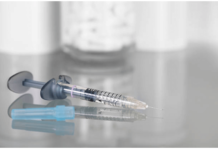Several characteristics of a good medical health app are discussed below. These include usability, data transfer, communication with providers, and behavior change techniques.
Health tracking and care support
Table of Contents
Designed to monitor and support patients’ health, medical health apps are designed to work with health care providers and their patients. These apps include features that monitor key health metrics such as blood pressure, blood sugar, and calories. They also provide patients with access to medical records, and allow them to monitor their health and take charge of their own health.
These apps also enable patients to schedule appointments, get prescriptions, and keep their health records up-to-date. They also provide information on physical activity, nutrition, and mental health.
Health apps are becoming more and more popular. Last year, 3.2 billion health apps were downloaded globally. They are becoming more prevalent in the future, as more healthcare providers invest in developing them. The number of health apps is set to grow in 2022, as well.
Usability
Several factors are believed to contribute to the low number of downloads of medical health apps. One of these factors is usability. It is a fundamental component of the product and the design process. Unless usability improves, gains from mobile health applications will not materialize.
This study uses a mixed-methods approach to examine the usability of existing mHealth apps. A sample of thirty users were interviewed to obtain feedback scores for nine mHealth apps. Three HCI/usability experts evaluated each application. The findings were evaluated on a heuristics list derived from the existing literature.
The most important usability attribute was satisfaction. It was also the most important attribute for consumers. Satisfaction is defined as user likability, pleasure, and comfort. However, consumers did not grade intuitiveness as a usability concern.
One of the most important usability attributes is learnability. This attribute was the most important for both consumers and mHealth insiders. This attribute is targeted to help users complete tasks, understand concepts, and achieve satisfaction.
Health data privacy
Using a health app can provide a wide variety of benefits. But consumers need to be aware of potential privacy concerns. There are a variety of laws that regulate the way providers use information.
For example, HIPAA, the Health Insurance Portability and Accountability Act, is designed to protect medical information. But it does not cover all health information online. Several laws, including Omnibus and HITECH laws, also apply to healthcare providers.
Another rule is the Health Breach Notification Rule, which may be a potential stumbling block for businesses with data breaches. The rule requires service providers to notify consumers when their personal health records have been breached.
During a pandemic, the Department of Health and Human Services (DHHS) waived its telehealth privacy rules. This was a positive move, as it allowed health care providers to see patients remotely. But it also meant fewer restrictions on who could access medical records.
Data transfer and communication with providers
Using a mobile health app can help doctors gain direct access to patient data. Similarly, providing patients with the ability to download their health records can help them take an active role in their health. These apps can also increase the health awareness of users. In addition, providers can use the information they collect to improve their practices.
Among other things, the Health app supports the SMART on FHIR standard, a standardized health record format. This standard enables patients to download and share their records. The Health app also has an EHR connection that leverages OAuth 2.0. This allows patients to download their records periodically. This is a particularly helpful feature if they are getting care from multiple providers.
Using a mobile health app also allows providers to access a patient’s health history when they visit a new location. Health apps also allow patients to aggregate their records into one convenient location. They can also add records by scanning a QR code or downloading a file.
Behavior change techniques
Increasingly, mobile health apps are being used to deliver health behaviour change interventions. However, the evidence that they improve health outcomes or are effective at changing behaviour is insufficient. In order to reap the full health benefits of these technologies, researchers and app developers must work together to identify the most effective behaviour change techniques and understand how to use them effectively. This review identifies the most commonly used techniques, examines their effectiveness, and provides recommendations for future interventions.
Behaviour change techniques (BCTs) are used in interventions to modify causal processes that regulate behaviour. They are replicable components of interventions, and can be applied in various modes. They can be thought of as active ingredients, but must be adjusted to the needs of the client. BCTs are often used in combination with other components of mobile health apps.







